The artwork "From Lenin to Christmas Tree" consists of 6 litho prints and depicts a particular square in my hometown of Riga. This place is well known to the cities residents as the former location of a monument to Lenin. The monument was demolished in 1992, right after Latvia gained it's independence. Since then this place is used for temporary or seasonal installations. Today, looking on this street in the center of Riga, you can still feel that something is missing. This palpable void illustrates the trauma of Latvians and their layers of memories. The artwork is available in black and white and a colored version.



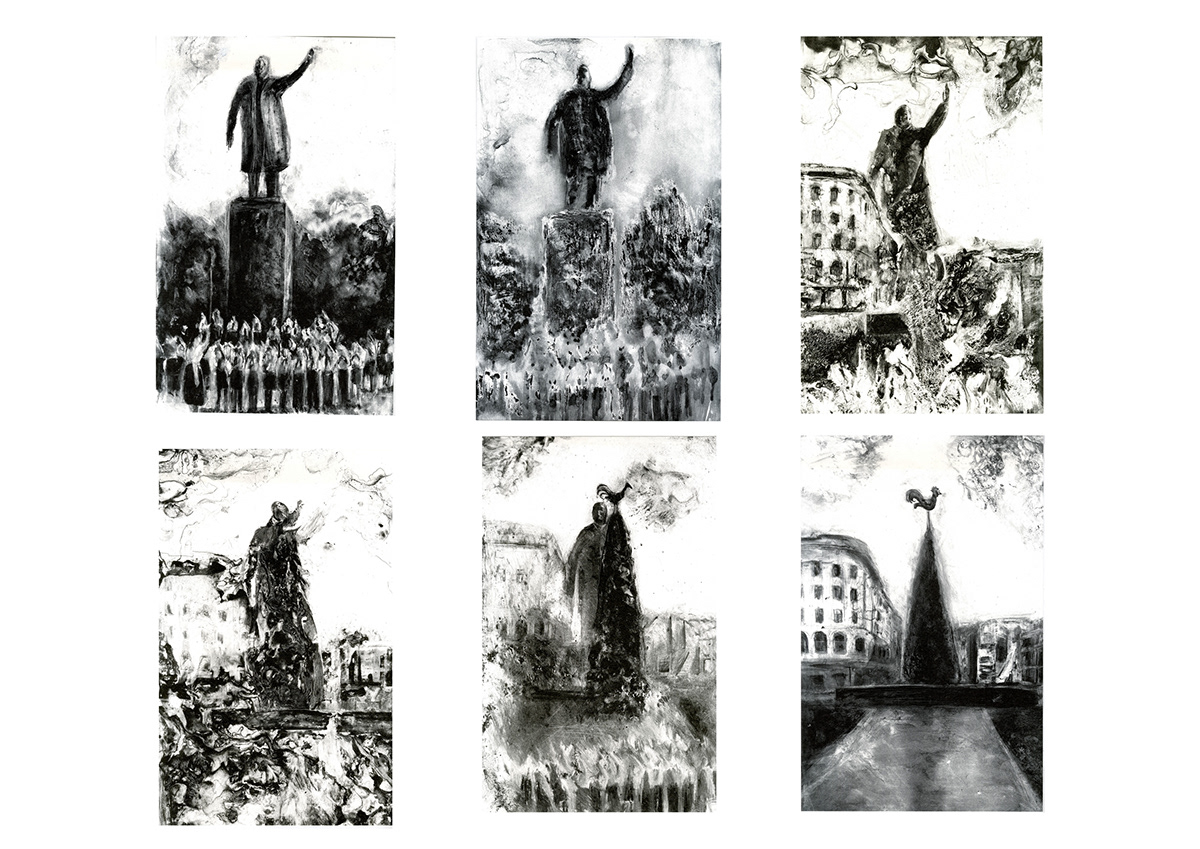
From Lenin to Christmass Tree, black and white version

From Lenin to Christmas Tree, coloured version.
Our memory forms our identity. The same could be claimed about a city, or even, if we take the Greek understanding of a polis as a basis for theoretical proposition, about a state. At the same time, the pair history/identity could be understood not as a linear sequence, not as a given primordial truth, but more as an ideological construction that derives from and through discourse. The main question of the research is what, why and how we choose to remember or forget and how this influence our identity.
In his book ‘Urban Palimpsest and the Politics of the Memory’ Andreas Huyssen reflects on a shift in relationships between history and memory. The modernist assumption of history assumed that one could learn from it. ‘Those who cannot remember the past are condemned to repeat it’ —will say philosopher George Santayana. National and universal pasts were monumentalised so as to legitimise and give meaning to the present. Meanwhile, memory was considered to be rather poetical topic. Today, claims Huyssen, history is no longer thought to be objective and scientific. Instead, unlike in Wordsworth’s or Proust’s times, memory speaks about social and political issues.
For the post-Soviet space as well as for post-Soviet art those questions became even more important. The feeling of lost identity which came with a loss of history is a key question to many artists of Eastern Europe (or those whose art is linked to the post-Soviet space).
For the post-Soviet space as well as for post-Soviet art those questions became even more important. The feeling of lost identity which came with a loss of history is a key question to many artists of Eastern Europe (or those whose art is linked to the post-Soviet space).




The six plates were done as true grain lithography prints. To me, true grain lithography has a lot of advantages comparing with stone lithography, because it allows you to easily carry, scan or store your films. Unlike stone lithography, in the true grain you draw and paint directly on the true grain. After that, the films are exposed to create a photoplate from which the image once again is transfered this time into paper.
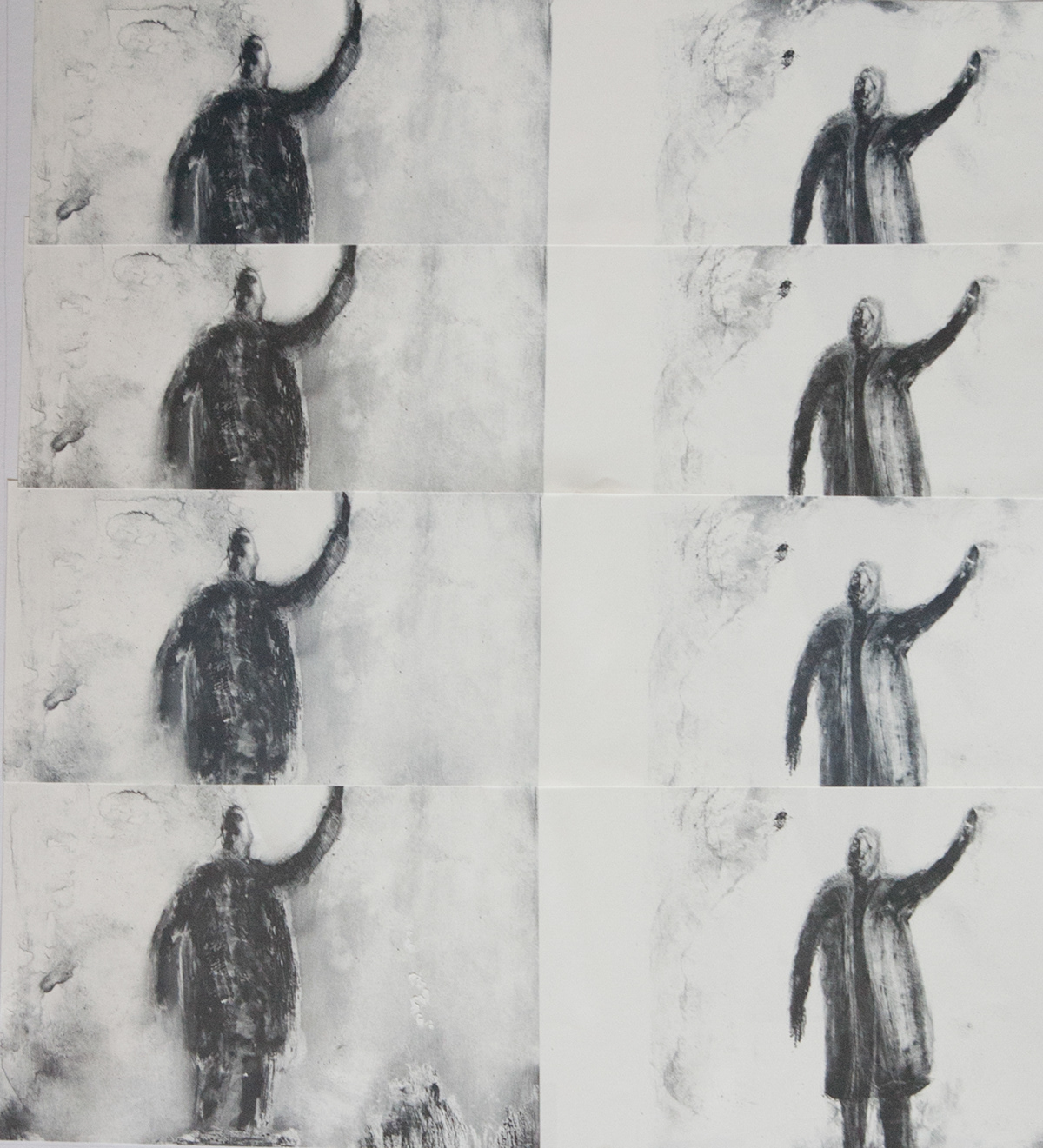
Good bye Lenin - collage

Fragment

Fragment

Fragment, black and white version
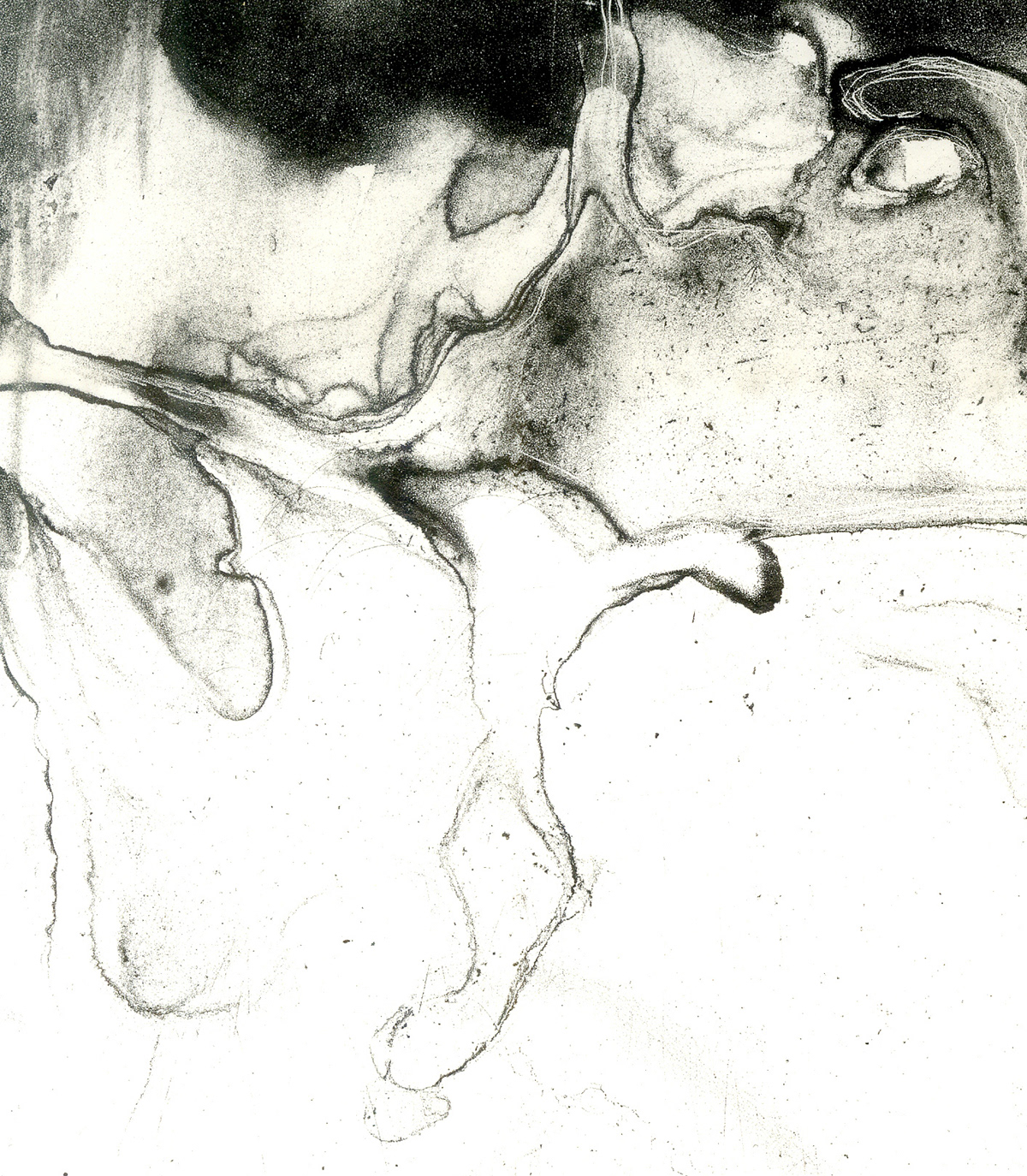
Fragment

fragment

fragment
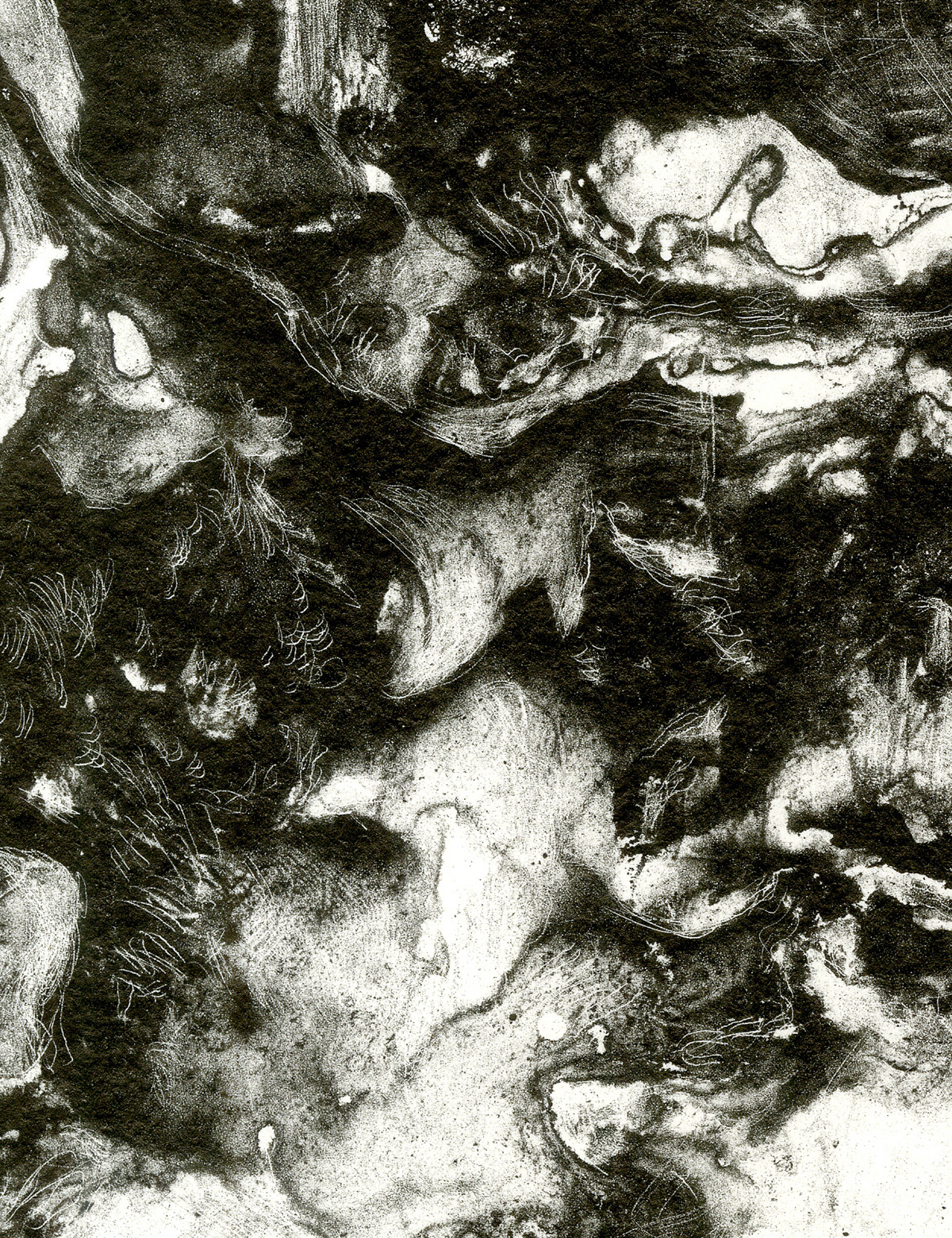
fragment
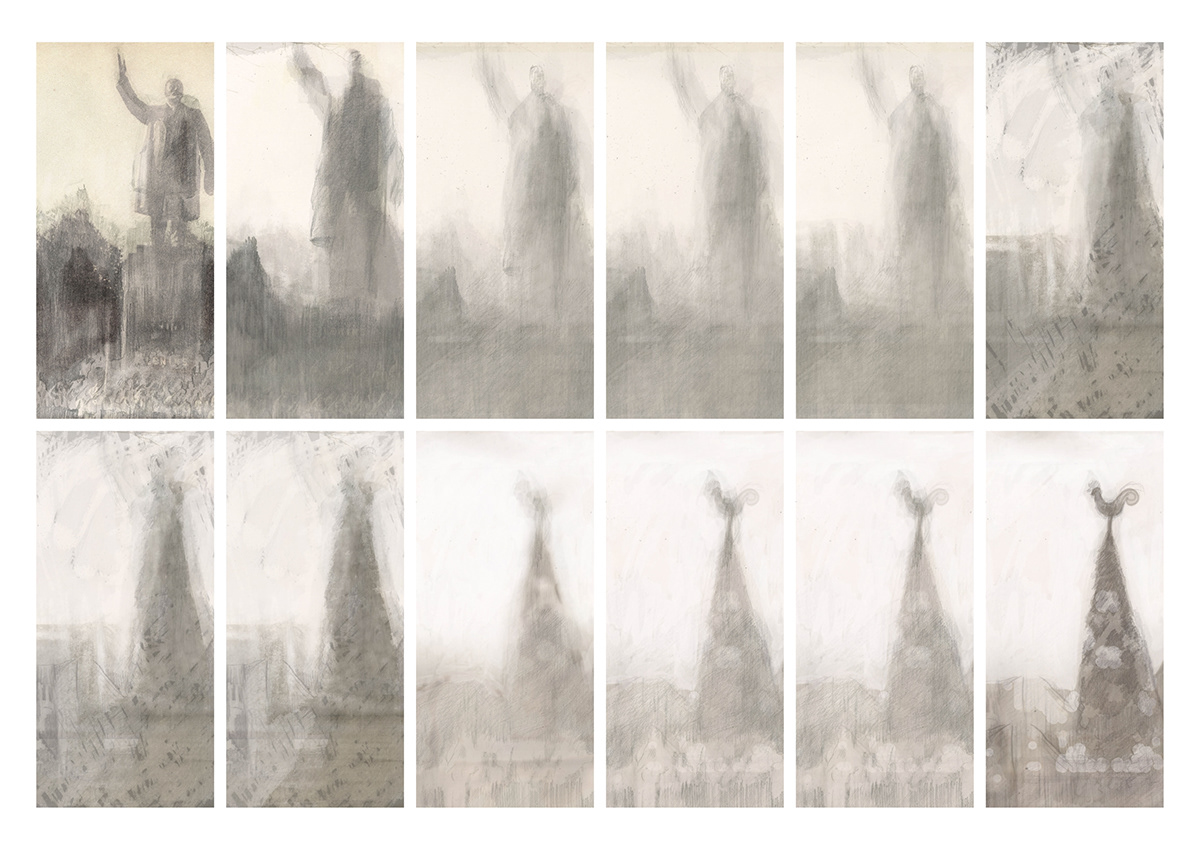
idea development, digital sketch

pencil sketch


pencil sketch
